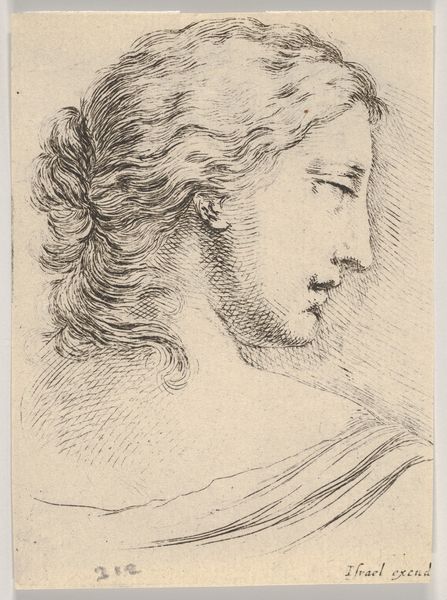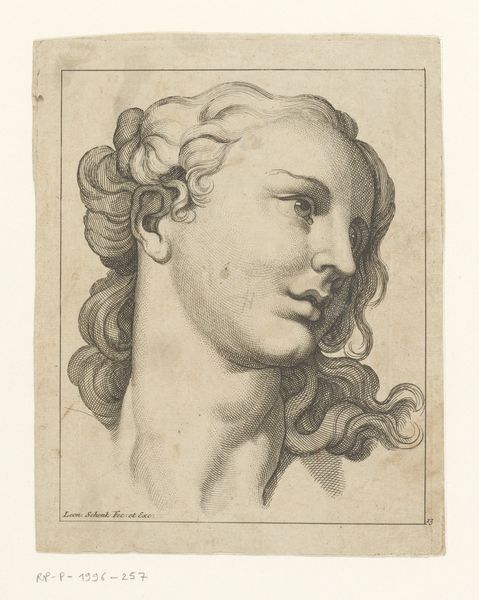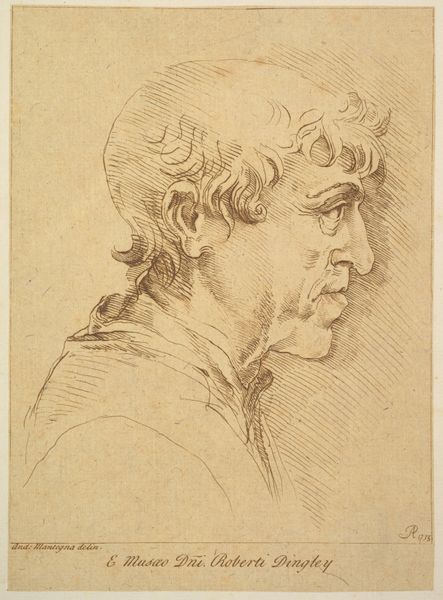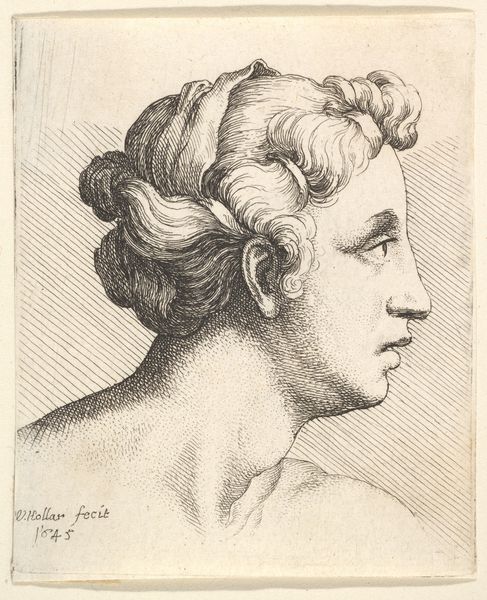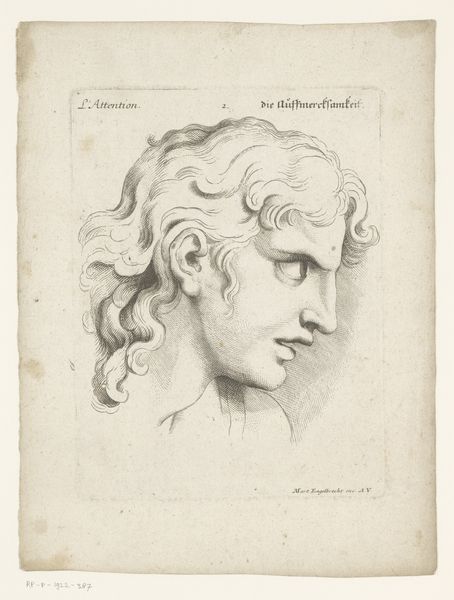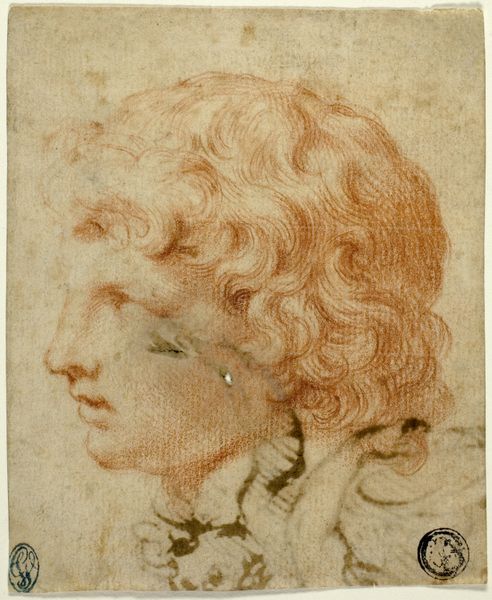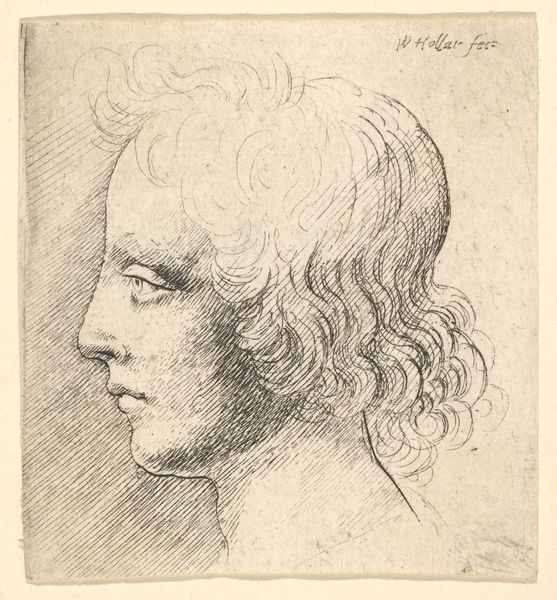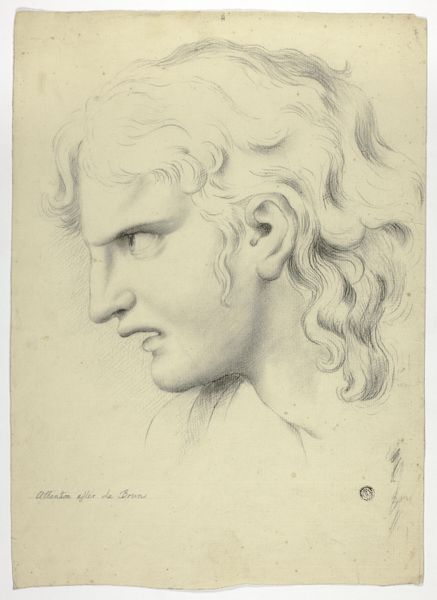
Idealized Female Head, Copied after the Antique 1790 - 1827
0:00
0:00
drawing, print, pencil
#
portrait
#
drawing
#
neoclacissism
# print
#
pencil drawing
#
pencil
#
portrait drawing
#
academic-art
Dimensions: sheet: 16 7/8 x 11 1/4 in. (42.9 x 28.5 cm)
Copyright: Public Domain
Johann Kastner made this red chalk drawing of an idealized female head on paper, sometime in the late 18th or early 19th century. It’s a copy after the antique, meaning it was made by an artist in training, learning to draw by reproducing classical sculptures. This was common practice in academies across Europe. Antiquity was seen to represent a high point of civilization, possessing standards of beauty and order that should be emulated. But what does it mean to copy? The practice suggests a conservative attitude toward art. Students were taught to respect established norms. Art schools were keen to instill in their students the discipline to master drawing, seen as the foundation for all visual art. But the academies were also sites of debate and sometimes even rebellion. To understand the purpose of this drawing, we can look at instructional manuals and other student drawings, along with the histories of specific academies. Art is rarely simply about individual expression, it is more often the product of institutions and social forces.
Comments
No comments
Be the first to comment and join the conversation on the ultimate creative platform.


